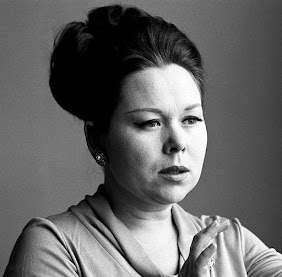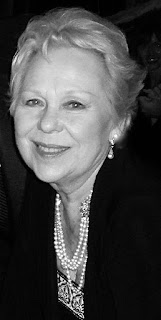Acclaimed performer has perfected her portrayal of Rossini heroines
 |
| Anna Caterina Antonacci's vocal skills were largely self-taught |
Particularly known for her roles in Rossini’s operas, Antonacci has been awarded many prizes and honours during her career. In 2021, she was elected as one of the ‘Accademici Effettivi’, by the panellists of the General Assembly of the Accademia Nazionale di Santa Cecilia, one of the oldest, and most prestigious, musical institutions in the world.
After studying in Bologna, Antonacci entered the chorus at the Teatro Comunale di Bologna in 1981. She made her solo debut in 1984 in Pistoia as the Contessa di Ceprano, in Rigoletto, by Giuseppe Verdi. In 1986, in Arezzo in Tuscany, she sang the role of Rosina, the heroine of Gioachino Rossini’s comic opera The Barber of Seville.
Eight years later, she made her debut at the Royal Opera House in Covent Garden in London as Elcia in Mosè in Egitto, another opera by Rossini. In 2006, Antonacci appeared at the Royal Opera House again, this time singing with the German-Austrian tenor, Jonas Kaufman.
Among her many operatic performances, the majority have been as a mezzo-soprano playing Rossini heroines, such as Dorliska in Torvaldo e Dorliska, Ninetta in La gazza ladra, Semiramide in Semiramide, Ermione in Ermione, Elisabetta in Elisabetta, regina d'Inghilterra, Elena in La donna del lago, Zelmira in Zelmira, Elcia in Mosè in Egitto, Anaï in Moïse and Angelina in La Cenerentola.
She has also appeared in La Voix Humaine, a one act opera for a soprano and orchestra, composed by Francis Poulenc, at the Opera-Comique in Paris in 2013.
 |
| Anna Caterina Antonacci (right, foot on stool) in a scene from Bizet's Carmen on stage in Paris |
Sadly, Antonacci was widowed in 2023 after Luca Giustolisi died of cancer at the age of 53, and she went to live in Paris. She has been recognised by the French Government with the award of the Chevalier de l’Ordre National de la Legion d’honneur, the highest national distinction anyone can receive in France.
She has won many prizes and awards during her career and has produced some acclaimed recordings of her operatic roles.
This summer (2025), Antonacci will be performing at Teatro Fenice in Venice, in the role of Madame de Croissy in Poulenc’s Dialogues des Carmélites.
She is now based at Verbier in Switzerland.
 |
| The Castello Estense in Ferrara sits at the heart of the historic city |
Ferrara, where Anna Caterina Antonacci was born, is a city in Emilia-Romagna, about 50 kilometres to the north east of Bologna. It was ruled by the Este family between 1240 and 1598 and they built an enormous castle for themselves to live in and to impress their guests. Building work on the magnificent, moated castle, which is in the centre of the city, began in 1385 and it was added to and improved by successive rulers of Ferrara until the end of the Este line. Parts of Ferrara have remained untouched in modern times and you can still see the narrow, mediæval streets to the west and south of the city centre, between the main thoroughfares of Via Ripa Grande and Via Garibaldi, which were part of the original core of the city in the middle ages. The impressive Este Castle was eventually purchased for 70,000 lire by the province of Ferrara in 1874, to be used as the headquarters of the Prefecture. Today, it is still the highlight of the city for tourists to visit.
.jpg) |
| Pistoia's duomo, originally built in the 10th century, has a Romanesque facade |
Pistoia, where Anna Antonacci made her solo debut, is a pretty, mediæval walled city in Tuscany to the north west of Florence. The city developed a reputation for intrigue in the 13th century and assassinations in the narrow alleyways were common, using a tiny dagger called the pistole, which was made by the city’s ironworkers, who also specialised in manufacturing surgical instruments. The Cathedral of Saint Zeno, or the Duomo of Pistoia, is in the Piazza del Duomo in the centre of the city. Originally built in the 10th century, the cathedral has a façade in Romanesque style. Set around the Piazza del Duomo are the octagonal Battistero di San Giovanni in Corte, and the Palazzo dei Vescovi, an 11th-century palace. The palace was bought and restored by the Cassa di Risparmio di Pistoia, a regional bank, in the late 20th century and it now houses a museum complex.
Also on this day:
1498: The birth of condottiero Giovanni dalle Bande Nere
1521: The birth of architect Francesco Laparelli
1622: The birth of mathematician and scientist Vincenzo Viviani
1801: The birth of philosopher and politician Vincenzo Gioberti



